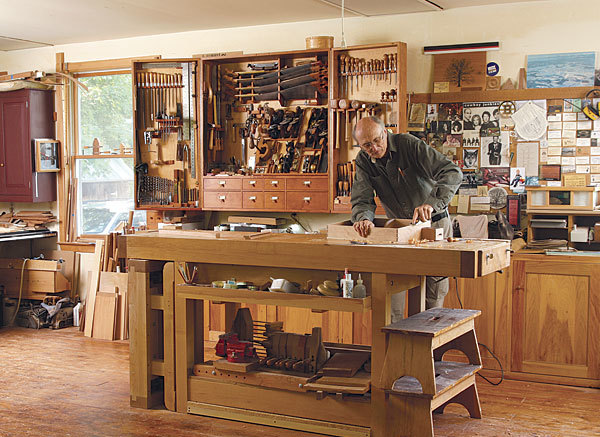Garage vs. Basement: The Ultimate Woodworking Shop Showdown

So, you’re ready to take your woodworking hobby to the next level and create your very own workshop. That’s awesome! But where do you put it? The age-old question: garage versus basement? It’s a tough one, and the “right” answer depends entirely on your specific needs and circumstances. Let’s dive into this Garage vs. Basement: Choosing the Best Space for Your Woodworking Shop debate and help you make the best decision for your woodworking haven.
The Great Garage Debate: Pros and Cons
Garages often win out as the first choice for a workshop, and for good reason. They typically offer a few significant advantages:
- Easy Access: No lugging heavy materials down stairs! This is a HUGE plus, especially when dealing with large sheets of plywood or lumber.
- Natural Light: Depending on your garage door and window situation, you might get plenty of natural light, saving you on electricity costs.
- Ventilation: Generally, garages have better ventilation than basements, crucial for dealing with sawdust and wood fumes.
- Space (Sometimes): Garages can offer a surprisingly generous amount of space, especially if you’re working with a two-car setup.
However, garages aren’t perfect. They also present some drawbacks:
- Temperature Fluctuations: Garages can get brutally hot in the summer and freezing in the winter, affecting both your comfort and your tools.
- Security Concerns: Depending on your setup, your tools and materials might be more vulnerable to theft or damage.
- Pest Control: Garages can attract pests more easily than basements.
- Car Space: If you have only a single-car garage, you’ll have to make space for your car AND your woodworking setup. This requires strategic planning!
Basement Bonanza: Weighing the Underground Options
Basements, while seemingly less obvious, present their own set of advantages and disadvantages. Let’s break them down:
- Temperature Stability: Basements tend to maintain a more consistent temperature throughout the year compared to garages. This is fantastic for tools and materials that are sensitive to temperature changes.
- Protection from the Elements: Your tools and materials are sheltered from rain, snow, and extreme temperatures.
- Quiet Environment: Typically, basements offer a quieter environment than garages, which can be beneficial for focused work.
- Increased Security: Basements are often more secure from theft than garages.
But, alas, the basement isn’t without its challenges:
- Limited Natural Light: You’ll need to rely on artificial lighting, potentially increasing your electricity costs.
- Humidity Issues: Basements can be prone to higher humidity levels, which can affect your tools and wood.
- Ventilation Challenges: Proper ventilation is crucial, and it’s often harder to achieve in a basement. You’ll need to think carefully about dust collection and exhaust fans.
- Accessibility: Carrying heavy materials up and down stairs can be a real back-breaker.
Garage vs. Basement: Choosing the Best Space for Your Woodworking Shop – The Verdict
So, which is better? There’s no simple answer. It truly depends on your individual circumstances. Consider these questions:
- What’s your budget? Improving ventilation and lighting in either space might require extra investment.
- What’s your climate like? Extreme temperatures might sway you towards one choice over the other.
- What kind of woodworking do you do? The size and type of projects will dictate the space you need.
- How much time and energy are you willing to invest in setup and maintenance? Both garages and basements require preparation.
- How much natural light do you need? This will heavily impact your choice.
Ultimately, the best way to decide is to carefully assess both spaces, considering the pros and cons in light of your unique woodworking needs and preferences. Take measurements, envision your ideal setup, and factor in your budget and physical limitations. Then, and only then, can you confidently choose the best location for your woodworking dreams to take flight!
Frequently Asked Questions
Q: What are the most important safety considerations for a woodworking shop in either a garage or basement?
A: Top safety priorities include good ventilation (especially for dust and fumes), proper lighting to prevent eye strain and accidents, clearly defined workspaces to avoid tripping hazards, and using appropriate safety equipment like dust masks, ear protection, and eye protection. Fire safety is crucial in both locations, so keeping flammable materials properly stored and having a fire extinguisher are musts.
Q: How can I improve ventilation in a basement workshop?
A: Installing an exhaust fan that vents directly to the outside is critical. Consider a dedicated dust collection system for your power tools. You might also need a whole-house ventilation system to address humidity issues. Make sure you regularly check your system to ensure it’s functioning correctly.
Q: What type of lighting is best for a workshop in a garage or basement?
A: Bright, even lighting is key. Consider LED shop lights, which are energy-efficient and long-lasting. Try to minimize shadows by using multiple light sources, aiming for at least 500-1000 lumens per 100 square feet. The type of lighting that’s best will vary depending on the specific needs of your space.
Q: How do I prepare a garage or basement for a woodworking shop?
A: This involves many things, like cleaning, assessing existing electrical outlets, and possibly installing new ones. Proper flooring might be needed – consider epoxy or interlocking tiles, which are durable and easy to clean. For a basement, it’s wise to address humidity issues before starting your shop.
Q: Can I convert a small garage or basement into a functional woodworking shop?
A: Yes, but you’ll need to be creative with your space and potentially make compromises. Multi-functional furniture (like fold-down workbenches) and smart storage solutions can maximize a small area. freeslots dinogame

















